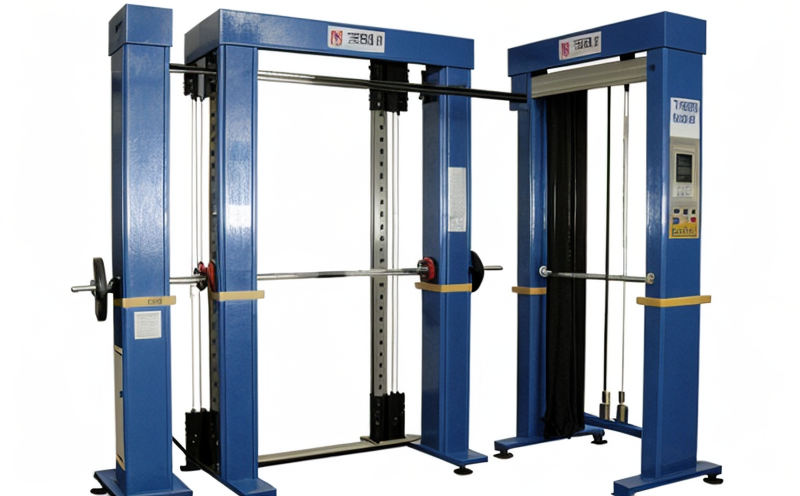EN ISO 13935 Seam tensile properties of fabrics
The standard EN ISO 13935 defines a method for determining the seam tensile strength and tear resistance properties of fabrics. This is particularly crucial in sectors where durability, reliability, and performance are paramount. Seam integrity directly impacts the longevity and functionality of products such as garments, upholstery, and industrial textiles.
The test involves subjecting fabric seams to a tensile force until failure occurs. The standard specifies detailed procedures for specimen preparation, testing parameters, instrumentation requirements, and methods for reporting results. Compliance with this standard ensures that textile products meet the necessary quality and safety standards in various applications.
One of the key aspects of seam tensile strength testing is understanding the impact on different types of fabrics. The properties can vary significantly based on weave structure (e.g., plain, twill, satin), yarn composition, and fabric construction. Therefore, it's essential to tailor the test conditions to match the specific characteristics of the material under consideration.
Another important factor is the choice of instrumentation. High-precision testing machines are required to apply consistent force at a controlled rate while accurately measuring the point of failure. The standard provides specifications for both single and multiple seam samples, allowing flexibility based on product design and production needs.
The acceptance criteria outlined in EN ISO 13935 ensure that products meet minimum requirements for safety and performance. These criteria are critical for quality control processes and can prevent the release of substandard materials into the market.
| Application | Description |
|---|---|
| Garments | Ensures seams in clothing last longer and reduce the risk of premature failure. |
| Upholstery | Guarantees that furniture upholstery maintains its integrity over extended periods. |
| Automotive interiors | Improves the durability of seat coverings and other components, enhancing overall vehicle quality. |
| Industrial textiles | Ensures that textiles used in harsh environments are robust enough to withstand stress. |
Why It Matters
The importance of seam tensile strength testing cannot be overstated. In sectors like textiles, the integrity of seams is critical for product performance and durability. Seam failure can lead to premature product degradation, which not only affects consumer satisfaction but also impacts brand reputation.
From a safety perspective, ensuring that seams meet specified standards is vital. In industries where products are exposed to high stress or frequent use, such as automotive interiors or industrial textiles, seam integrity directly translates into enhanced user safety and product longevity.
The results of this testing play a key role in the quality assurance process. By adhering to EN ISO 13935, manufacturers can demonstrate compliance with international standards, thereby gaining market confidence and regulatory approval.
Moreover, seam tensile strength testing helps identify potential weaknesses early in the product development cycle, allowing for design improvements that enhance overall product performance. This proactive approach ensures that products meet or exceed expectations from the outset.
Applied Standards
The primary applied standard is EN ISO 13935, which provides a comprehensive framework for determining seam tensile strength and tear resistance properties of fabrics. This international standard ensures consistency across different laboratories and jurisdictions.
In addition to EN ISO 13935, other relevant standards include ASTM D685, which focuses on the measurement of seam strength in woven fabrics; and IEC 60297, which addresses similar aspects for electrical insulation. While these standards have their own specific applications, they share common goals with EN ISO 13935 in ensuring high-quality textile products.
- EN ISO 13935: Method of testing seam tensile properties of fabrics
- ASTM D685: Standard Test Method for Seam Strength of Woven Fabrics
- IEC 60297-1: Electrical Insulation Materials and Articles – Part 1: General Requirements
Industry Applications
The EN ISO 13935 standard is widely applicable across various industries, particularly those that rely on durable fabrics. Garments, upholstery, automotive interiors, and industrial textiles are some of the key sectors where seam tensile strength testing is essential.
- Garments: Ensures that clothing products can withstand daily wear and tear without compromising safety or performance.
- Upholstery: Guarantees that furniture upholstery remains intact, enhancing both aesthetic appeal and user comfort over time.
- Automotive interiors: Improves the durability of seat coverings and other components, contributing to overall vehicle quality.
- Industrial textiles: Ensures that textiles used in harsh environments are robust enough to withstand stress without failure.





